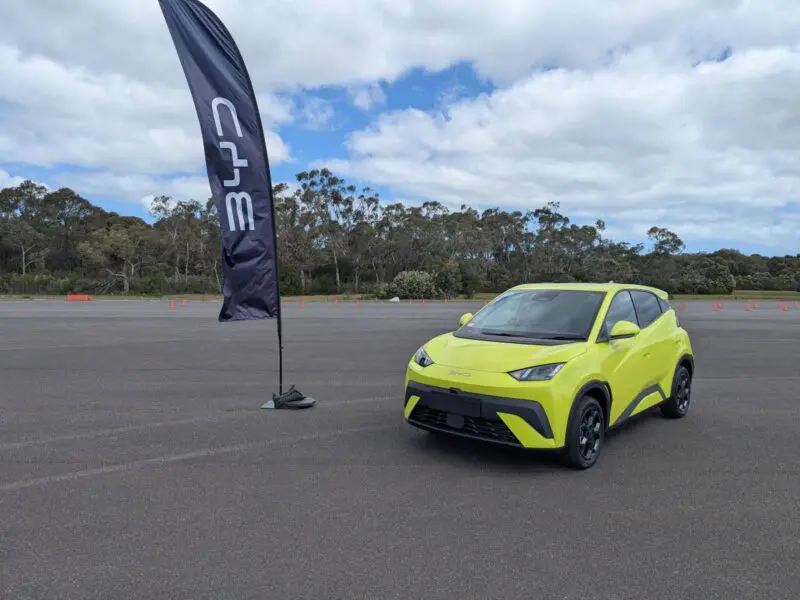
A Rapidly Shifting EV Landscape
Australia’s electric vehicle market is moving through one of its most dynamic phases yet. With Tesla’s long-standing lead under threat, BYD’s drive for affordable EVs, Hyundai’s innovative small-car approach, and even hydrogen trucks and electric aircraft entering the scene, this week’s developments from The Driven paint a fascinating picture of transformation across the global and regional clean transport industries.
Tesla’s Grip on Australia’s EV Market Weakens
For years, Tesla has ruled the Australian EV segment. Its Model 3 and Model Y continue to dominate charging stations and suburban streets from Sydney to Perth. Yet, as the EV sector matures, BYD, the rapidly expanding Chinese automaker, is catching up fast. New data and analysis suggest that Tesla’s lead may finally be softening. While Tesla still boasts an aura of innovation and prestige, buyers are increasingly drawn to BYD’s lower price points and competitive range offerings. Charts tracking sales momentum show narrowing margins as consumers welcome new choices—and as Tesla faces the challenge of refreshing a maturing lineup.
Elon Musk’s company is far from retreating, though. Beyond consumer vehicles, Tesla is investing heavily in autonomous transportation, which brings us to its next major step.
Cybercab: Tesla Bets Big on Autonomy
Tesla’s next generation vehicle, dubbed the Cybercab, is reportedly heading into production in 2026. The car, designed without a steering wheel or pedals, exemplifies Tesla’s ambitions to transition from a car manufacturer to a mobility ecosystem powered by full autonomy. This project could redefine urban transport, blending the concept of robotaxis with on-demand convenience. While Tesla’s self-driving technology remains controversial in its current form, the Cybercab suggests a renewed corporate vision focused strictly on the autonomous future.
Such a strategy may help Tesla diversify just as competition in the EV market intensifies both globally and in Australia. Still, the company’s reputation occasionally faces friction from public behavior, as recent police data shows.
Driving Habits Under Scrutiny
According to reports, Tesla drivers topped the list of motorists most frequently caught speeding in the past year. One in six Tesla owners reportedly received speeding tickets—a curious cultural footnote highlighting how performance vehicles, even when electric, inspire spirited driving. This trend reflects both Tesla’s market dominance and the performance-focused nature of its products.
BYD’s Affordable Charge: The Atto 1
Meanwhile, BYD continues to surge forward with aggressive market positioning. The release of detailed specifications for the Atto 1—expected to be the lowest cost electric car in Australia—signals the company’s ambition to capture mainstream buyers. The Driven’s first local drive impressions underscore that BYD’s Atto 1 is likely to redefine what Australians expect from budget EVs. With compact pricing and pragmatic range, BYD is poised to become the standard-bearer for attainable electric mobility.
In a market where premium EVs have so far dominated, the Atto 1’s arrival could mark the start of mass adoption for clean vehicles beyond early adopters.
Hyundai’s Fresh Compact Perspective
In contrast to the race for longer range and bigger SUVs, Hyundai’s Inster EV brings a refreshing counterpoint. It’s compact, cheerful, and designed around practicality rather than grandeur. The Inster’s positioning challenges the cultural obsession with ever-larger cars, showing that efficiency, liveliness, and style can thrive within smaller frames. Hyundai’s approach resonates with urban dwellers who value affordability, maneuverability, and design flair over road-dominating scale.
Innovation Beyond Cars: Hydrogen and Aviation
Electrification innovation is now reaching well beyond passenger cars. In an unexpected development, Pickles Auctions announced it would sell Australia’s first hydrogen-powered tilt tray truck. Built by Hyzon, the truck’s arrival at auction indicates growing acceptance of hydrogen’s role as a complementary energy technology for heavy-duty transport. Commercial operators could soon have emission-free options for logistics and towing that go far beyond battery limitations.
Further afield, Air New Zealand has just launched its first electric aircraft, a milestone that underlines aviation’s shift toward decarbonization. The debut of the Beta Alia CX300 in New Zealand airspace demonstrates that electric propulsion is not confined to roads. It signals early steps toward regional, low-emission air networks that could dramatically reshape short-haul transportation in Oceania.
Charging Made Effortless
EV infrastructure is also catching up to consumer expectations. Australian network provider Jolt unveiled an automatic charging feature that allows drivers to simply plug in and start charging without swiping cards or activating apps. This improvement, modest on the surface, represents the larger trend toward making sustainable transport frictionless. The aim is to normalize EV ownership through convenience—a critical step in converting skeptics.
Plug-In Hybrids: The Dirty Secret Persists
Not all electrified transport trends appear positive. A new report cited by The Driven describes plug-in hybrids as “one of the biggest cons in automotive history,” claiming that real-world emissions can be up to eight times higher than official testing figures suggest. This finding reinforces criticism that plug-ins often fail to deliver their promised environmental benefits when drivers rarely use electric mode. With the new emissions data surfacing, policymakers and consumers may pivot more decisively toward fully electric alternatives.
A Market in Reinvention
From Tesla’s evolving identity to BYD’s affordability play, from Hyundai’s small-car charm to new energy frontiers like hydrogen transport and electric flight, one theme cuts through: the EV revolution is no longer about a single brand or technology. The story unfolding across Australia and the Pacific is one of competition, innovation, and democratization of clean mobility.
As supply expands, choices diversify, and infrastructure matures, the electric future is no longer hypothetical—it is arriving fast, on four wheels, wings, and even hydrogen tanks.
All EV Sales Research Team
10/23/2025
